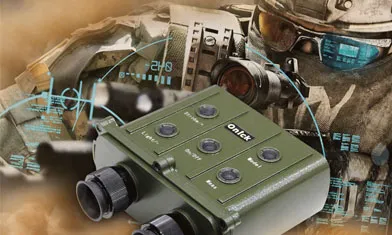The Core Difference Between Infrared Night Vision Devices And Thermal Imagers
Infrared night vision devices and thermal imagers are two commonly used observation devices at night, in low light, or in complex environments. However, they operate based on completely different technical principles, resulting in fundamentally different observation results and applicable scenarios. The following comparison covers six core dimensions to clarify the differences and applicable boundaries between the two. I. Core Technology Principles: "Low-Light Amplification" vs. "Heat Detection"
(I) Infrared Night Vision Devices: Rely on "Low-Light Enhancement" and Require External Light Source Assistance
The core of infrared night vision devices is low-light enhancement technology, which essentially "amplifies weak visible light/near-infrared light" in the environment, rather than actively detecting heat. Its operating logic is divided into three steps:
Weak Light Collection: The objective lens captures residual weak visible light (such as moonlight and starlight) or near-infrared light (wavelength 760-1100nm, invisible to the human eye, but some night vision devices have built-in low-power near-infrared fill light) in the night environment.
Signal Amplification: After light enters the device, it is projected onto the "image intensifier tube" (the core component). The image intensifier tube converts the weak photon signal into an electron signal. The electrons are then accelerated by a high-voltage electric field, causing them to strike a fluorescent screen, generating a strong light signal.
Imaging Output: The fluorescent screen converts the amplified electron signal into a visible image, which is ultimately displayed through the eyepiece or display. The image is typically green (the human eye is most sensitive to green, which reduces fatigue during long observations). Simply put, infrared night vision devices are like "magnifying glasses" at night. They rely on the presence of weak ambient light (or their own supplemental lighting). If they are in a completely dark environment (such as an underground cave or a sealed dark room) and do not have supplemental lighting, they will not be able to produce images. (II) Thermal Imagers: Based on "infrared radiation detection," no light source required
The core of thermal imagers is infrared thermal radiation detection technology, which directly captures medium- and long-wave infrared light (wavelengths of 8-14μm, belonging to the "thermal infrared" band) emitted by an object itself, completely independent of external light. The operating logic is as follows:
Receiving thermal radiation: Infrared detectors (such as vanadium oxide (VOx) and mercury cadmium telluride (MCT) detectors) capture thermal infrared radiation emitted by target objects (such as humans, vehicles, and trees). Any object with a temperature above absolute zero (-273.15°C) continuously radiates heat.
Signal conversion and processing: The detector converts the thermal radiation signal into an electrical signal, which is then processed by an image processing chip to calculate the temperature differences between different areas, generating a "thermal distribution image" (i.e., a thermal image).
Pseudo-color or grayscale imaging: Thermal images typically use different colors (e.g., red and yellow for high temperatures, blue and purple for low temperatures) or grayscale (white for high temperatures, black for low temperatures) to indicate temperature differences, ultimately presenting a "thermal outline" of the target rather than its true color. For example, during nighttime observation, a human body (37°C) appears as a hot area (red/white), while surrounding walls and trees (cooler) appear as a cold area (blue/black). This allows for clear target identification even in complete darkness, smoke, or dusty environments.
II. Differences in Applicable Scenarios: Choosing the Right Device for More Efficiency
(I) Infrared Night Vision Devices: Suitable for Low-Light Scenarios Requiring Detailed Observation
Civilian Night Activities: Examples include hunting (needing to identify prey species and whether they are injured), camping (observing nearby wildlife and clearly identifying their appearance), and home security (observing the facial features of intruders for subsequent identification);
Low-Light Operations: Examples include night patrols (for security guards and community property management), and night fishing (observing fish activity on the surface while also clearly identifying fishing rods and lines);
Mild Tactical Scenarios: Examples include police patrols (needing to identify pedestrians and whether they are armed), and civilian drone aerial photography (recovering the visible outlines of ground objects, rather than thermal contours). A typical example: The NV300 infrared night vision device from an outdoor brand, equipped with a second-generation image intensifier tube, can clearly observe targets within 50 meters in moonlight, including a hare's ears and fur texture. However, if exposed to strong light (such as direct flashlight), the screen will instantly turn white and require a 10-second wait before returning to normal. (II) Thermal Imagers: Suitable for scenarios requiring temperature recognition or complex environments
Emergency rescue: such as fire scenes (penetrating smoke to locate trapped personnel and determining survival through thermal imaging—survivors have a stable body temperature profile); earthquake rubble rescue (penetrating rubble to locate buried survivors and distinguishing between "human heat signatures" and "normal-temperature rocks");
Professional inspection: such as power inspections (detecting "hot spots" in wires and transformers to determine if there are overload or short circuit risks); building inspections (locating leaks in hot water pipes inside walls—the temperature difference between leaks and the surrounding area will show up as an anomaly on thermal imaging); animal protection (locating injured wild animals at night—injured animals may have an abnormally high or low body temperature);
Tactical and security: such as police counterterrorism (during night raids, unaffected by strong light and smoke, quickly distinguishing between "hostages" and "criminals"—both are alive, but can be identified by their position and movement); and military urban combat (penetrating thin cover to locate hidden enemy personnel while avoiding glare that reveals one's own position). A typical example: A firefighting thermal imaging camera, the TF600, can penetrate 5 meters of dense smoke at a fire scene, clearly displaying the thermal profile of trapped individuals within 15 meters. Rescuers can quickly locate the target using the "red hot spots" on the thermal image, while avoiding interference from the intense flames.
III. Summary: Key Differences in One Sentence
Infrared night vision devices: "Using light to see details"—they rely on light and can clearly see the target's outline, but are sensitive to strong light and smoke and lack penetration.
Thermal imaging devices: "Measure temperature to see outlines"—they do not rely on light, can penetrate simple obstacles and complex environments, and can distinguish temperature, but lack detail.
When choosing, clarify your needs: If you need to "see clearly who/what" an individual is, choose an infrared night vision device; if you need to "find where/whether the individual is alive," choose a thermal imaging device.





















